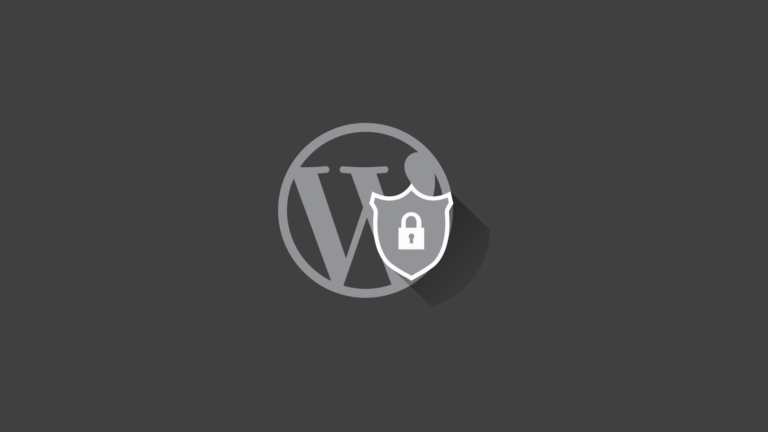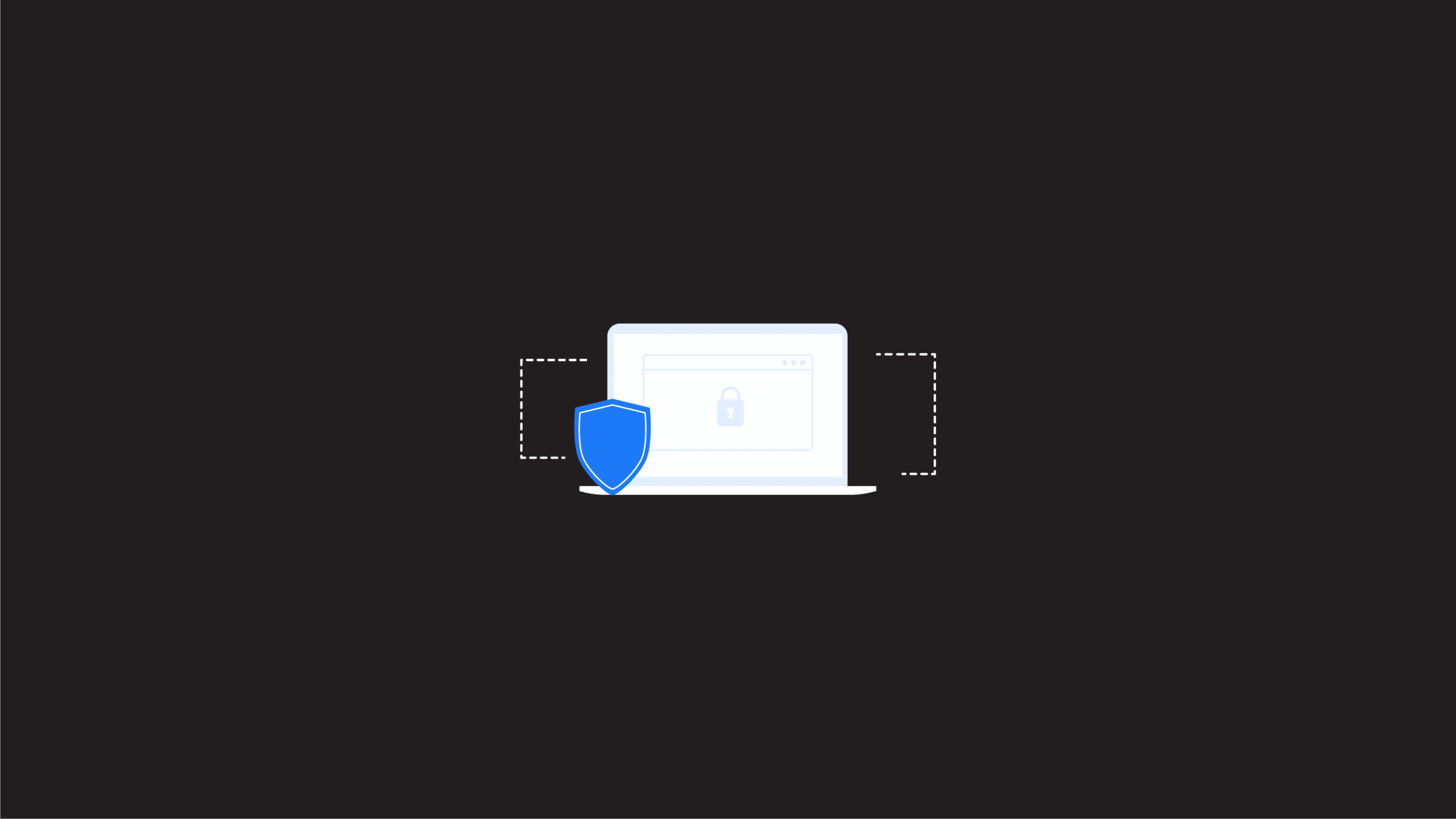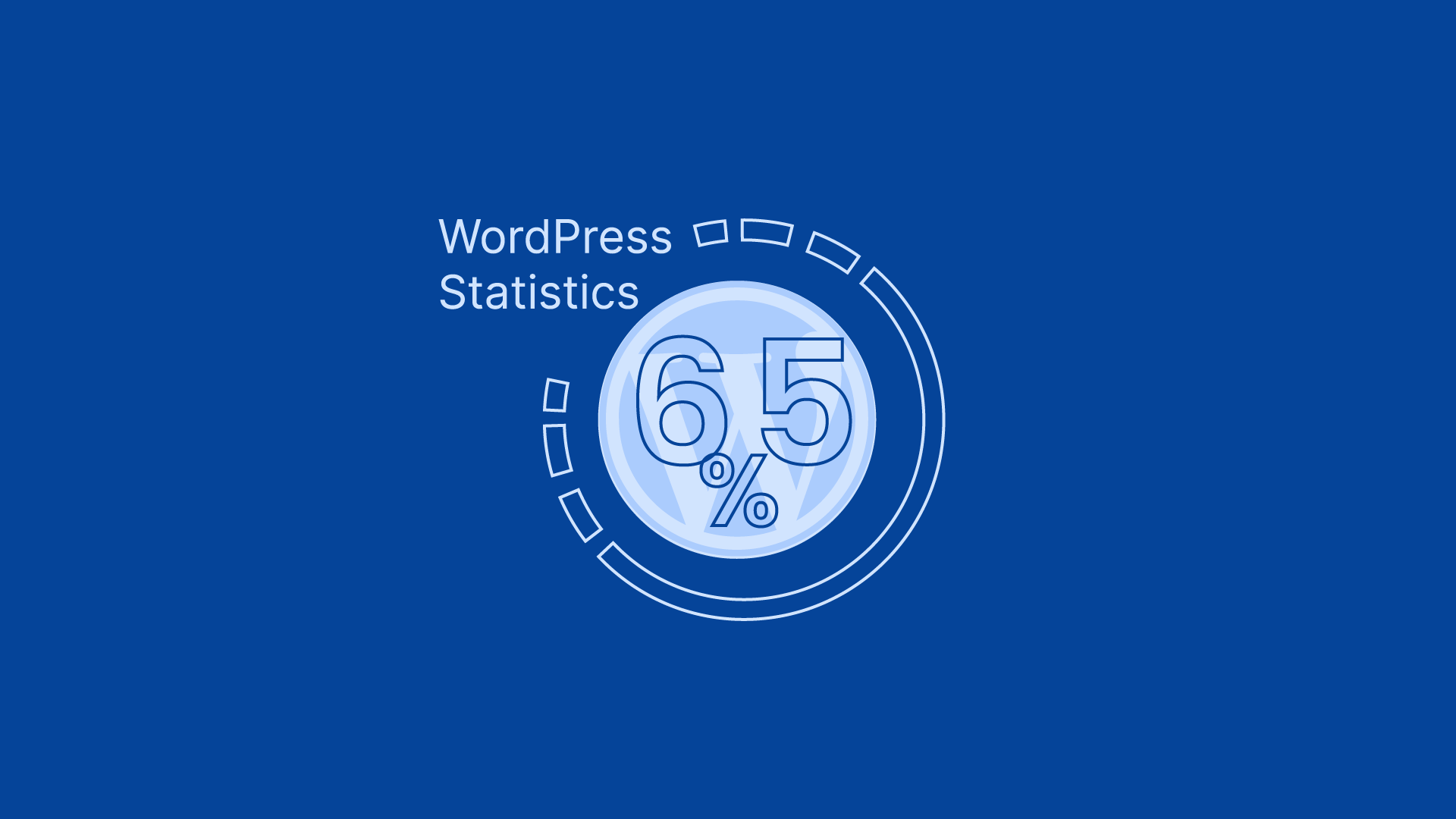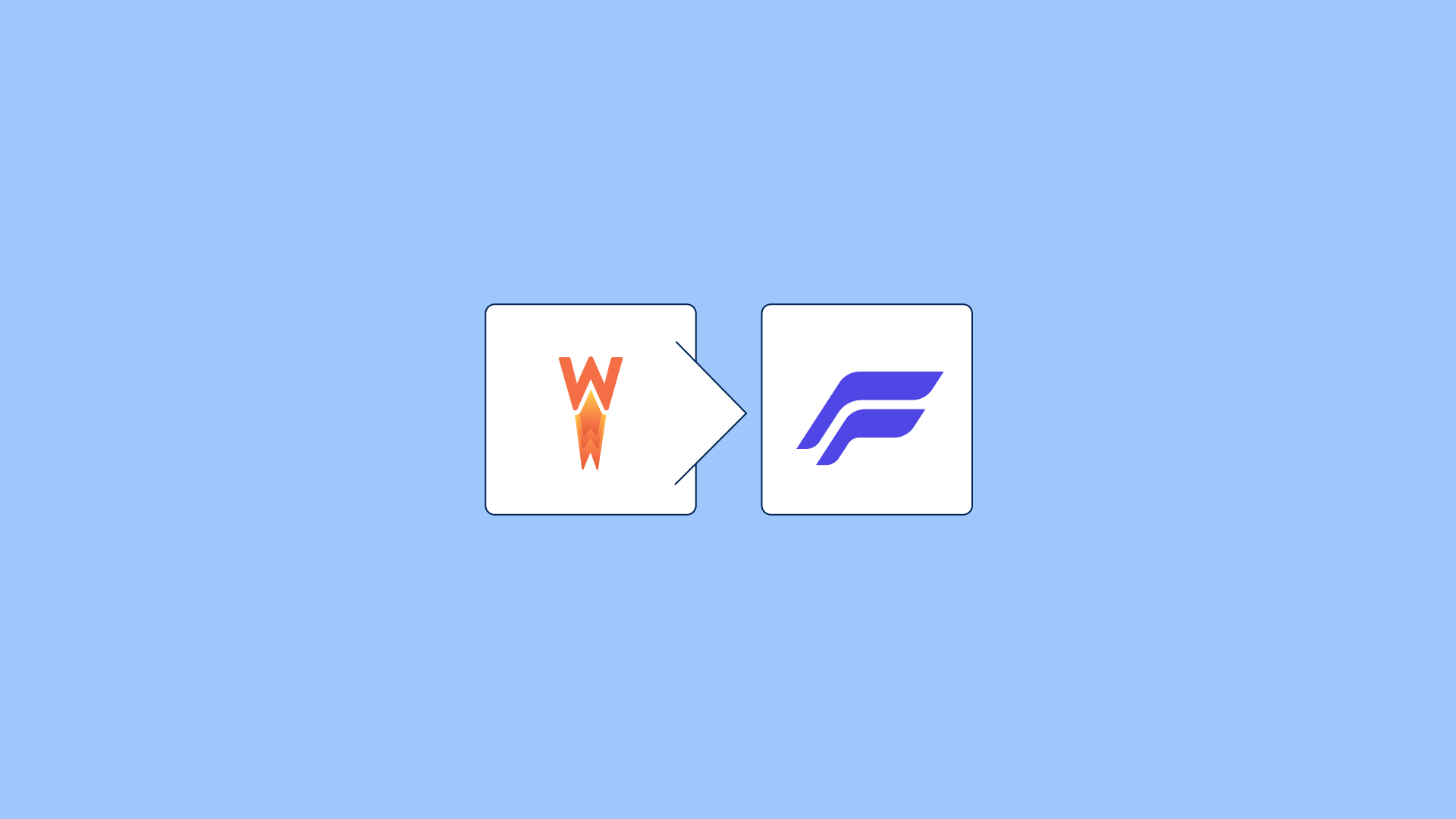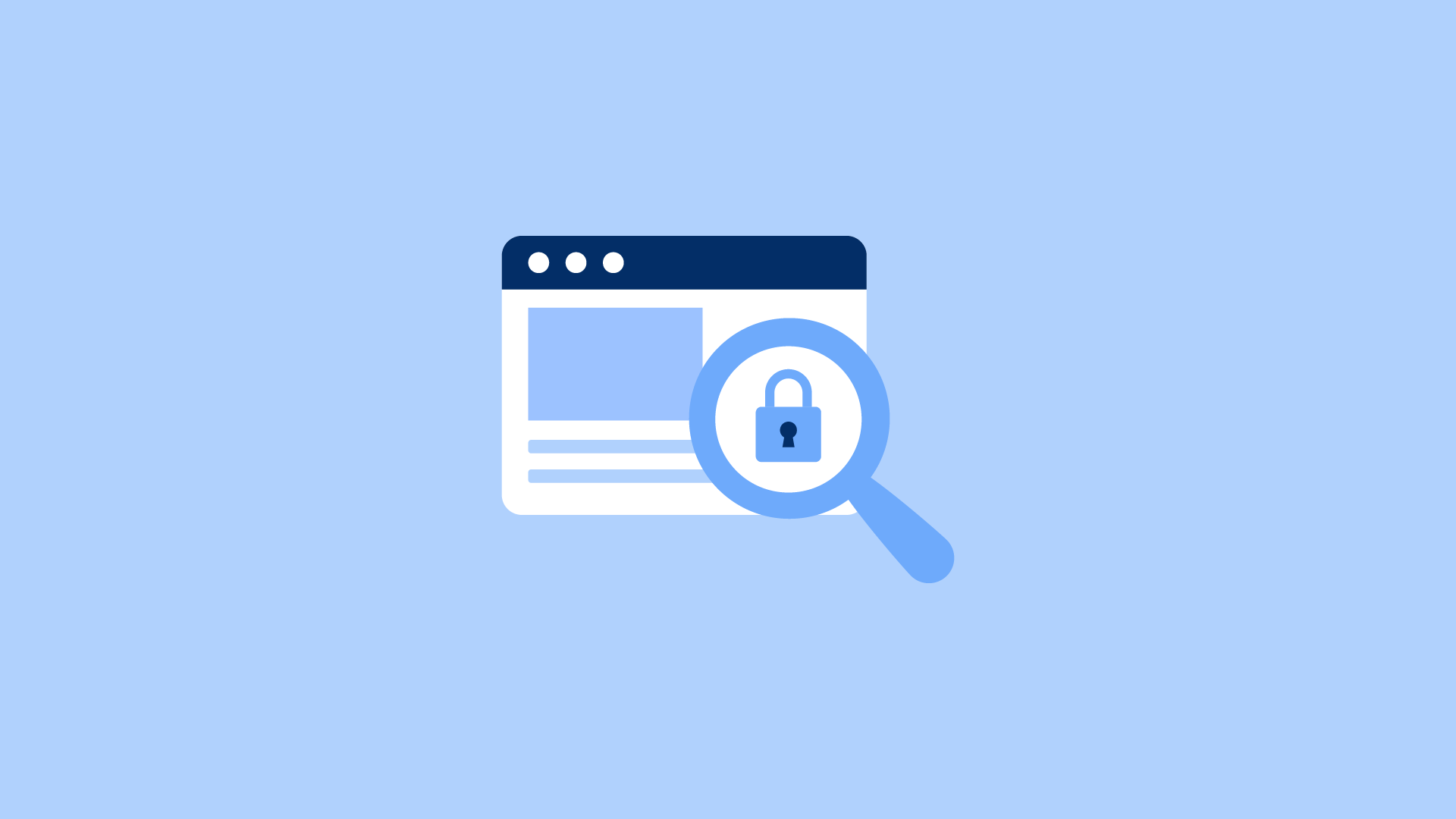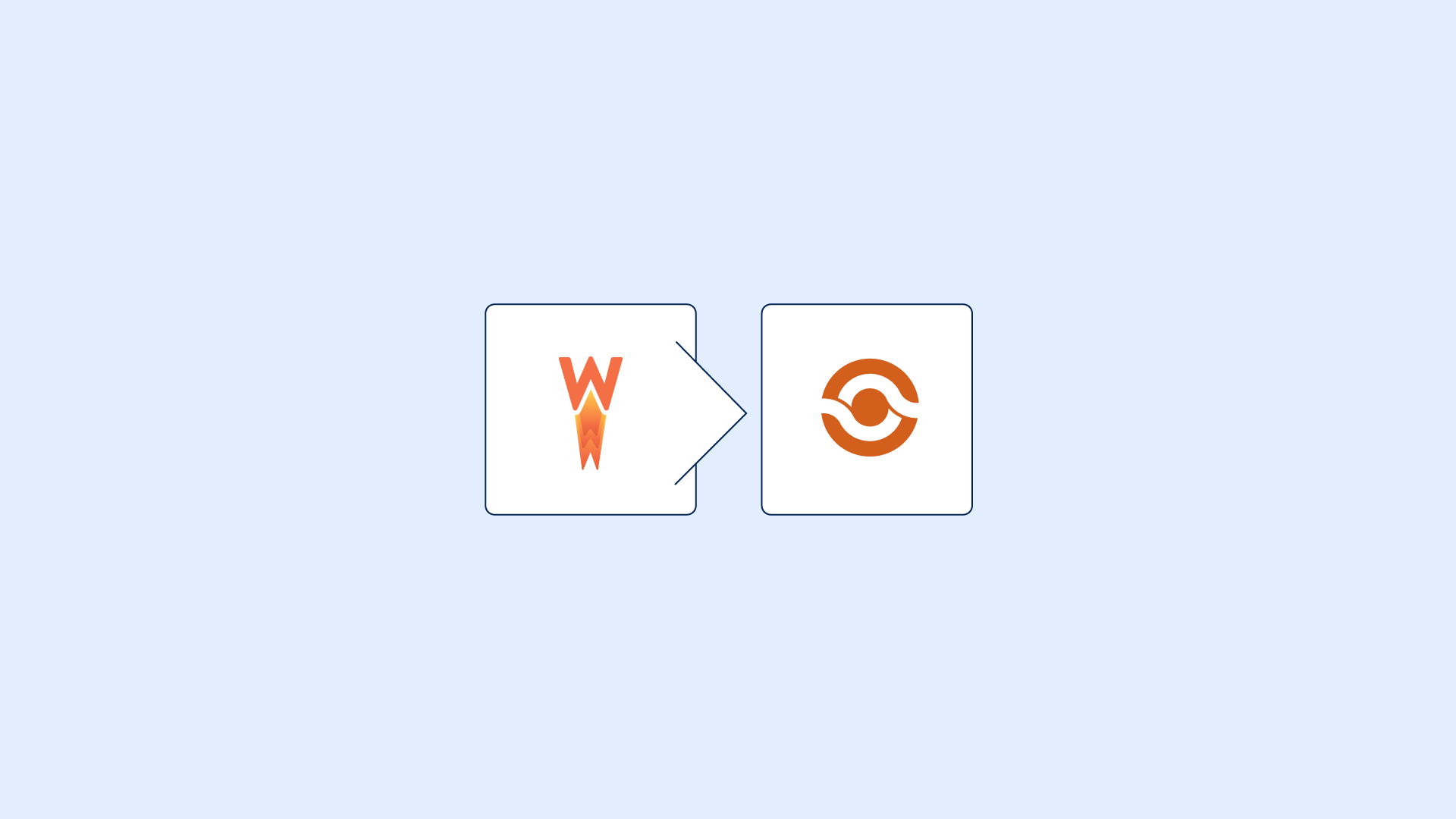|
Getting your Trinity Audio player ready...
|
WordPress security is important for all WordPress websites, and website security is a fundamental aspect of safeguarding online operations. If you want to protect your website from hackers, then you need to install a plugin called Wordfence.
This plugin scans your site automatically and alerts you when someone tries to hack into your site. WordPress is one of the most popular Content Management Systems (CMS). In fact, it powers over 43% websites in the world today.
You’ll learn how to protect yourself against hackers, malware, spam, and phishing attacks. You’ll also find out how to prevent your site being hacked, how to clean up after a breach, and what to do if someone hacks your account.
If you’re looking to build a more secure website, we hope this guide helps you achieve that goal. This guide covers everything you need to know about keeping your site secure.
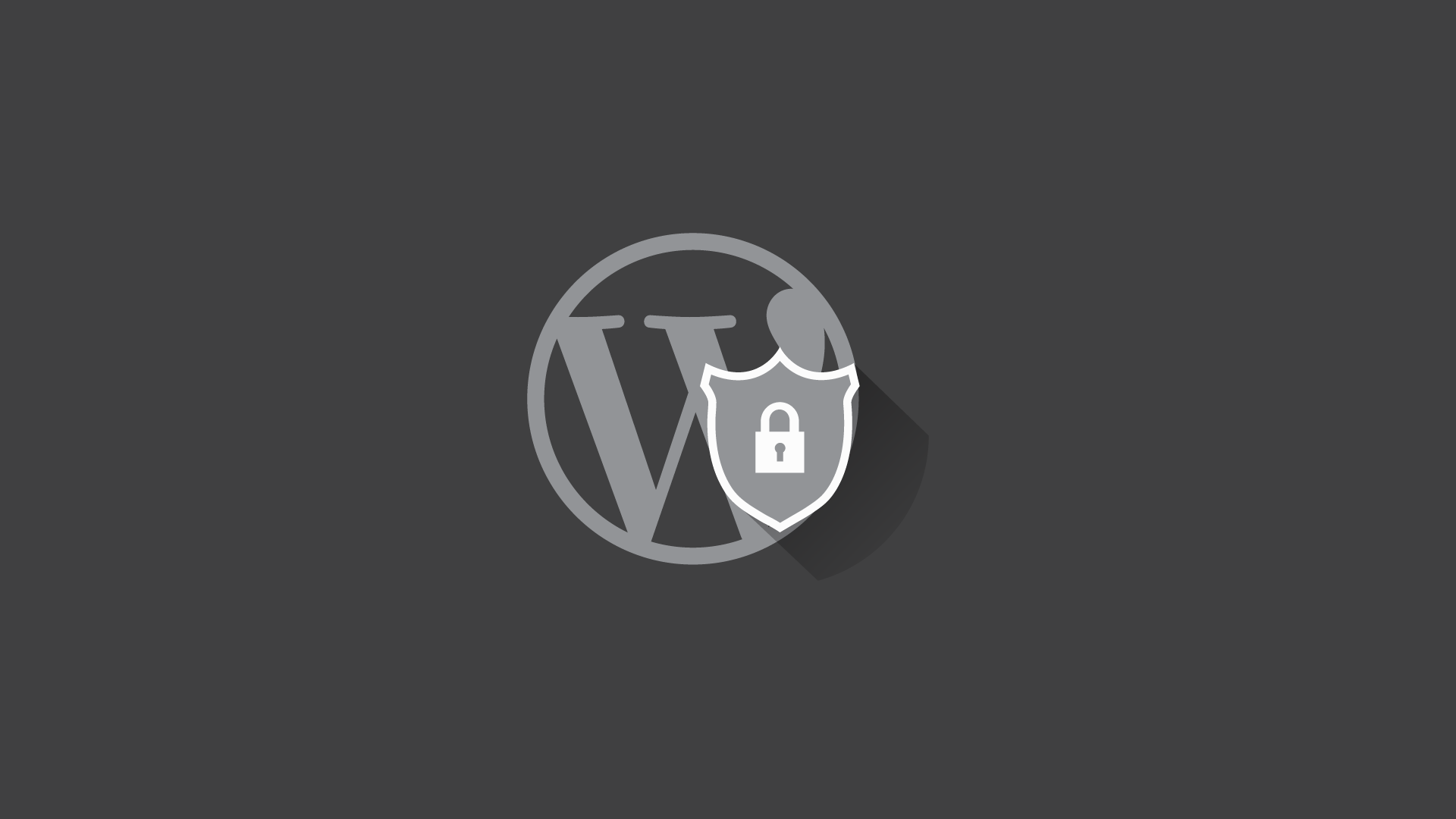
Why Should I Care About WordPress Security?
A hacked WordPress site can cause serious damage to your business. Hackers can steal customer data, shut down your online store, or even delete your entire database. If you don’t take steps to protect yourself, hackers could ruin your reputation and cost you thousands of dollars.
Your website needs to be secure to prevent cybercriminals from breaking in. You can do this by following best practices such as keeping software up to date, installing security plugins, and securing your network. Additionally, selecting a reliable hosting provider is crucial to ensure robust website security, as a good hosting company acts as a security partner, providing essential safeguards and features to protect customer data.
There are many different methods hackers use to break into your website.
Here are some common ones:
Brute force attacks – These involve guessing passwords or trying combinations of letters and numbers.
Social engineering – This involves tricking someone into giving away information about themselves. For example, a hacker might send emails pretending to be a friend asking for personal information like credit card numbers.
Phishing – This involves sending people fake messages designed to look like real bank statements or invoices. When recipients open the email, they give up sensitive information.
Malware – This refers to malicious code that does things like install viruses or spy on people.
What are the Common WordPress Security Issues? (Top 5)
Hackers often target sites that have weaker passwords. If you use a password manager, make sure it’s up to date.
Your site could be hacked if hackers gain access to your admin account. This happens most frequently because people reuse the same username and password across multiple sites. To prevent this, change your login credentials every few months.
Make sure all your plugins are up to date. Check out our list of the best WordPress security plugins. Additionally, it is crucial to keep the WordPress core software updated to prevent vulnerabilities and enhance website performance and security.
Keep your wpconfig file secure. Don’t store sensitive information such as credit card numbers or bank account numbers in your wpconfig file. Instead, keep those files outside of your web root folder.
If you’re running WordPress 4.9 or later, you’ll want to install the plugin WP Super Cache. It helps speed up your site by caching static resources and speeding up PHP processing.
A hacker will try to find a way to insert malware into your website. They do this by trying to guess your login credentials or by exploiting vulnerabilities in your theme or plugins.
Malware can slow down your site. For example, malicious code can cause issues with your site’s performance.
Here are some common symptoms of malware:
1. Brute Force Attacks
Brute force attacks are one of the most common types of cyberattacks targeting the login page. They use automated software programs to attempt to guess username/password combinations.
These programs run millions of times per second against hundreds of thousands of accounts. Once a successful combination is found, the attacker gains access to the account.
The problem with brute force attacks is that they work best against weak passwords. When you make up a password, you want something unique that won’t easily guessed. But if you pick a strong password like “123456,” hackers will quickly find it.
So what do you do? You add numbers, symbols, and special characters to your password to make it harder for attackers to crack. For example, if you’re trying to log into your bank account, you might choose a password like “mypass$w0rd.”
But even those long, complex passwords aren’t safe. Hackers can still break them by running massive amounts of computer code against every possibility. And once they’ve cracked your password, they’ll move on to the next target.
2. Cross-Site Scripting (XSS)
WordPress sites are often targeted by hackers looking to steal data or install malware on visitors’ computers. One way to do this is via cross-site scripting (XSS), where attackers inject malicious JavaScript code into a web page.
This allows them to take control over a visitor’s browser and perform actions such as displaying ads, collecting personal information, or installing malware.
A hacker could trick a user to load malicious code onto his/ her computer through a vulnerable site, which could lead to identity theft, financial loss, or even worse. In fact, according to Sucuri, 54.4 percent of all reported WordPress vulnerabilities in 2021 were due to XSS attacks.
There are many ways to exploit an XSS attack, including social engineering, email spoofing, and phishing. For example, a hacker might use a spear phishing campaign to send out emails containing malicious links to unsuspecting victims.
Once clicked, the link takes the victim to a fake login screen designed to look like the real one. If the victim enters credentials, he/she is redirected to a different URL where the attacker collects sensitive information.
Another common method used to exploit XSS attacks involves social engineering. Hackers might try to trick users into clicking on links or opening attachments that contain malicious code. They might also attempt to trick people into downloading files or executing programs that contain malicious code.
Finally, there are plenty of tools that allow hackers to easily find and exploit XSS flaws. These include automated scanners, vulnerability assessment tools, and penetration testing software.
3. File Inclusion Exploits
Brute force attacks are the simplest way to hack into a web server. A hacker simply tries every possible combination of letters and numbers until he finds one that works. This technique is called “brute forcing.” If you’re trying to log into your bank account online, brute forcing could work.
But it won’t work very well against a password protected site like Facebook or Twitter. Hackers use automated programs called bots to try thousands upon thousands of combinations per second. They’ll keep trying until they find a valid username and password combo.
Vulnerabilities in your WordPress Website’s PHP Code Are the Second Most Common Type of Security Hole
The second most common security hole in WordPress sites is file inclusion exploits. These vulnerabilities occur when hackers insert malicious code into files on your site. A secure hosting environment is crucial in preventing file inclusion exploits, as it helps protect against cyberattacks.
For example, they might upload a script that adds a link to a malware downloader onto your blog. Or they might add a piece of JavaScript that steals login credentials.
File Inclusion Exploit Example
A hacker inserts some malicious code into a file on your site. When someone visits the page, the code executes and does something nasty.
In this case, the hacker added a simple script tag to a post on his blog. He included a URL pointing to another site where visitors could download a virus.
This attack worked because the hacker inserted the malicious code directly into a file on your website. You don’t even know there’s anything wrong.
4. SQL Injections
SQL injection attacks occur when hackers attempt to exploit weaknesses in databases. They do this by inserting malicious code into a web form field, such as a username or password input box. This allows them to execute commands on the server side of the application.
A hacker could gain access to the database through an SQL injection attack. Once inside, he could steal information, delete data, or even shut down the system.
Your website will be vulnerable if it doesn’t take steps to protect against SQL injections. You must ensure that every field used to store sensitive information is properly sanitized.
5. Malware
Malware is any type of software designed to damage a computer system without the owners’ consent.
There are many types of malware, including
Viruses (computer programs that replicate themselves),
Worms (self-replicating programs that spread via email messages),
Trojan horses (malicious programs disguised as useful ones),
Spyware (software used to gather information about you),
Adware (programs that display ads based on what you do online),
Keyloggers (devices that secretly record every keystroke you make),
Rootkits (malicious programs that hide files and folders),
Ransomware (a malicious program that locks up your PC and demands money to unlock it), etc.
Most people don’t realize that they’re being attacked because most of the time, the signs aren’t there. They just see slow PCs, crashes, and lost data. But once they find out what happened, it’s usually too late. If you suspect that your site might be infected, here are some things to look for:
Slow computers – Your web server may be overwhelmed with requests, causing delays while it processes each one. This could cause problems for visitors, especially if they’re trying to access important parts of your site.
Crashes – You’ll notice that your browser stops working properly. Or, your entire operating system freezes up. These symptoms indicate that something went wrong with your computer.
Lost data – When you try to save a file, open a document, or print a report, you may receive an error message saying “The operation couldn’t be completed.” This happens when your hard disk becomes corrupted.
Unusual behavior – Sometimes, hackers use malware to send spam emails or post comments on social media accounts. They may even change your homepage settings to promote certain products or services.
If you find yourself dealing with any of these issues, contact us immediately. We can help you identify the problem and restore your systems to normal functioning.
What Makes Your WordPress Site Vulnerable to WordPress Security Issues?
WordPress sites are among the most popular platforms on the web. They’re used by millions of people around the world every day.
However, there are many security issues that you must take into consideration when building a WordPress site. In fact, several factors can make your WordPress website more vulnerable to successful attacks than others.
Implementing proper WordPress site security measures from the beginning is crucial to ensure safety and efficiency. Features like the Jetpack Security package offer comprehensive solutions such as real-time backups, firewall protection, and malware scanning that can significantly enhance a site’s security posture.
Here are some of the most common vulnerabilities that hackers exploit.
1. Using Weak Passwords
Using a weak password is one the biggest security vulnerabilities you could easily avoid. If someone gets access to your email account, it doesn’t matter how secure your password is because they already have access. But if they gain access to your WordPress login credentials, it’s game over.
Your WordPress admin password should be stronger, including multiple types of characters, numbers and symbols. In addition, your password shouldn’t be used anywhere else. For example, don’t use the same password for your Facebook account as your Gmail account. And make sure your password isn’t something like 1234567890 or qwerty123456.
Curious if your password has been breached? You can check your password history in your WordPress dashboard. Then scroll down to the bottom of the screen and select Show All Logins. This will show you every single password you’ve ever used on your WordPress site.
If you see a username or password that belongs to you, change it immediately. Don’t worry about losing access to your blog; just reset your password and log into WordPress again.
2. Not Updating WordPress, Themes or Plugins
WordPress, plugins, and themes are essential parts of any web project. They help make your website work and look great. But many people don’t realize how much they rely on these programs to function properly.
In fact, some of them are so critical to your online presence that it’s easy to overlook the importance of keeping them updated.
If you don’t keep up with WordPress updates, you could end up being vulnerable to hackers. Hackers love to target WordPress sites because they know there’s a lot of money to be had.
And when they find vulnerabilities in your system, they’ll exploit them to steal data or even take over your entire site.
In addition to being potentially unsafe, free plugins and themes aren’t necessarily well written. They might not work properly, or they might even cause problems on your site. If you do decide to go ahead and install a free plugin or theme, make sure to test it thoroughly before putting it live.
Even worse, you might miss out on features that come along with newer versions of WordPress, plugins, and themes. For example, you might lose access to premium support options, or you might see errors pop up on your site that aren’t resolved in older versions.
3. Using Plugins and Themes from Untrustworthy Sources
Plugins are small programs that extend functionality of WordPress. They come in different shapes and sizes, and each one does something slightly different.
Some add extra features like social media sharing buttons, others help you manage comments, while some make it easier to design your site.
Poorly written, insecure, or outdated software is one of the most commonly used methods for hackers to attack websites.
As a general rule, you should only use plugins and theme packages from reputable developers who’ve been in business for some time. The best plugins to avoid are nulled plugins as they are not safe and can open your site to hacking.
The best WordPress plugins you will find are on the WordPress repository and other reputable companies. The two best options is Kandace themes and Envato Elements.
4. Using Poor-Quality or Shared Hosting
Shared hosting is cheap, but it doesn’t provide enough resources to run a successful web presence. If you’re looking for a low cost option, consider a virtual private server (VPS). This type of hosting provides better performance and security than shared hosting.
If you run a WordPress website, chances are good that you use some form of shared hosting. This type of web hosting allows many people to host their sites on a single machine.
Although this makes things easier for everyone involved, there are drawbacks. One major drawback is that most shared hosting providers don’t offer much in terms of security.
They often lack proper firewalls, fail to patch vulnerabilities quickly enough, and provide limited support options.
Another downside is that shared hosting usually offers less storage space than what you’d find on dedicated hosting.
In addition, since your files are spread out across several different machines, hackers could potentially break into your site without having to hack each individual machine separately.
The best way to avoid these problems is to move your site to a VPS. This option gives you complete control over your server and ensures that no one else shares your computer with your site. You’ll also receive additional benefits like greater bandwidth and faster load times.
Finally, don’t forget about backups. Your data is important, so make sure you store it somewhere else besides your primary server. Backups are essential because they allow you to recover lost files and databases.
5. An unhidden root directory
A hidden root directory is when you have an index file at the top level of your document root. It usually has a .htaccess file with instructions on how to access it.
This means anyone who knows the URL will be able to see all of your files. So if you’re not careful, you could expose sensitive information.
You should never leave a .htaccess file visible on your server. Instead, create a new file called .htaccess and place it inside the folder containing your main index file.
This way, only authorized users will be able to view the contents of the folder.
How Can I Protect My WordPress Website From Hackers?
According to a recent report from Akamai Technologies, WordPress sites are among those most likely to experience attacks. And while there are many ways to protect yourself against hackers, here are eight things you can do today to help keep your site safe.
Here are 8 security tips or actions you can take today to protect your WordPress site.
1. Use Strong Passwords
WordPress sites are vulnerable to hacking attacks because many people reuse passwords across different platforms. This makes it easy for hackers to gain access to your site.
Hackers can use brute force methods to guess weak passwords, or they can find out what information you used to log into another site. Either way, once they have access to your WordPress site, they can do things like delete files, steal data, or even install malware.
Passwords are important because they allow people to access your account without having to provide personal information like usernames and email addresses.
However, weak passwords are easy to guess, making them vulnerable to hacking attempts.
To make strong passwords, use a mix of upper case letters, lowercase letters, numbers, symbols and punctuation marks. For example, “Password123!” is much stronger than “password”.
2. Install a WordPress security plugin
WordPress is one of the most popular platforms for building sites online today, and it’s no wonder why. With millions of active installations around the world, there are plenty of people out there looking to exploit vulnerabilities in your site.
If you don’t take steps to secure your WordPress installation, hackers could potentially gain access to sensitive information about your customers and employees.
To keep things safe, you’ll want to install a WordPress security plugin. These tools allow you to quickly and easily configure settings that prevent attackers from accessing your site. They can even automatically update your site whenever a vulnerability is discovered.
There are dozens of options available, and we’ve put together a list of some of our favorites. We’ve tested each tool extensively and found that they work well across multiple versions of WordPress.
You can use any of these plugins on both free and premium plans, so you won’t need to worry about paying extra for additional functionality.
iThemes Security Plugin
The iThemes Security Plugin has been updated several times since its initial release, and it includes features such as real-time protection, automatic updates, and more. It also offers an optional premium version with advanced features including two-factor authentication, IP blocking, and more.
Sucuri SiteCare Security Plugin
The SiteCare Security Plugin is designed to provide comprehensive protection for your WordPress site. This plugin includes everything you need to make sure your site stays protected.
Wordfence Premium Security Plugin
This plugin is built specifically for businesses and organizations running WordPress sites. It provides powerful anti-spam, malware, and brute force protections, along with a number of other useful features.
3. Enable WordPress two-factor authentication
WordPress offers a two-factor authentication for all accounts. Two-factor authentication requires you to use both something you know (your password), and something you have (a code sent via SMS or email). If someone tries to log into your account without providing the correct information, they won’t be able to do anything.
If you’re worried about security, you might want to enable two-factor authentication on your WordPress login. You’ll still be required to provide your username and password, but you’ll receive a text message containing a six digit verification code. Once you enter that code, you’ll be logged in.
Two-factor authentication isn’t perfect. Hackers could potentially intercept your SMS messages, but there are ways around that. For example, you could set up a second phone number where you’d send the verification codes. Or, you could use a different app like Google Authenticator to generate the codes.
You don’t have to wait for WordPress to implement two-factor authentication; you can start doing it yourself now.
4. Keep your WordPress site up to date
WordPress sites are often targeted by hackers because they don’t update automatically like some other platforms. This makes it easy for attackers to exploit vulnerabilities in older software.
In fact, WordPress is considered the most popular target among cybercriminals. Hackers use automated tools to scan WordPress sites looking for vulnerable installations. They’ll even go so far as to install malicious code on your server just to see what happens.
If you want to keep your WordPress site safe, you need to check for updates regularly and apply them immediately. You can do this manually, but there are plenty of third-party apps out there that automate the process. These include free options such as WPScan and paid solutions like Sucuri Security Suite.
5. Set up proper root directory permissions on your server
Root Directory permissions are important because they control what files and folders can be accessed. If you don’t know how to do it, here’s a quick guide.
Permissions determine whether people can access files on your site. If you don’t know what permissions are, it could mean that someone else is accessing your data without your knowledge. This is especially important if you’re running multiple sites on one server. For example, if you run a WordPress blog and a Joomla website, make sure both blogs have different permissions settings.
If you want to learn more about file permissions, check out our guide here.
7. Have a scheduled WordPress backup strategy
If something does happen to your site, you want to know that you won’t lose everything. And while we don’t recommend hosting your entire site on WordPress, having a backup strategy in place is important.
A good backup plan includes having a schedule set up to automatically perform regular backups and sending those backups securely off-site to a remote WordPress backup server. You’ll want to make sure that you have a restore process in place in case you ever need to recover your site from a backup.
Here are some tips to keep in mind when setting up a reliable WordPress backup plan.
Backup Your Site Regularly
The best way to protect yourself against losing your work is to back it up regularly. You don’t necessarily need to do this every day, but once per week is good enough. This gives you plenty of time to recover from any issues that might arise.
Send Your Backups Offsite
You should always take regular backups of your site, but you shouldn’t rely solely on those backups. Instead, you should store your backups somewhere else too. Ideally, you’d like to store them offline, either on a hard drive or external storage device. If you’re worried about security, you could even use a cloud-based solution such as Amazon S3.
Use Secure File Transfer Methods
When sending files across the internet, you should never just email them directly. Instead, you should use secure file transfer methods such as FTP or SFTP. These protocols encrypt your information during transmission, ensuring that nobody can intercept it.
8. Have an active WordPress Brute Force Protection
Brute force attacks are one of the most common ways hackers attempt to gain access to your site. They try to guess passwords, use dictionary words, or even just type random letters and numbers.
This method isn’t foolproof, however, because it relies on guessing and doesn’t take into account how many times someone has already attempted to log in. In addition, some people don’t change their password often enough, making it easier for attackers to crack it.
Protecting against brute force attacks is relatively easy. You’ll want to install a plugin like iThemes Security plugin for the Firewall that protects your site from brute force attacks. Once you’ve installed it, activate it and set up rules to block IP addresses that have been used to attack other sites. If you’re running multiple sites, consider installing the plugin on each of them.
9. Disable Login Attempts After X Minutes
If someone tries to log in to your site after a certain amount of time has passed, they will automatically fail. This helps prevent brute force attacks where attackers try hundreds of usernames and passwords until they find one that works.
10. Restrict Access to Certain IP Addresses
Your website may be accessible by anyone who wants to view it, but if you want to restrict access to specific IP addresses, you can do so using iptables. Simply add a rule that blocks traffic from a particular range of IP addresses.
Web Server and Firewall Security
Protect your WordPress site with a web application firewall (WAF)
A web application firewall (WAF) is a crucial security measure to protect your WordPress site from various types of attacks, including SQL injection, cross-site scripting (XSS), and brute force attacks. Acting as a barrier between your website and the internet, a WAF filters out malicious traffic and prevents attacks from reaching your site. By installing a WAF plugin, such as Wordfence or Sucuri, you can significantly enhance your WordPress site’s security. These plugins not only block malicious traffic but also provide real-time monitoring and alerts, ensuring that you are always aware of potential threats.
Implement SSL & HTTPS on your web server
SSL (Secure Sockets Layer) and HTTPS (Hypertext Transfer Protocol Secure) are essential for securing your WordPress site. SSL encrypts data exchanged between your website and visitors, ensuring that sensitive information like login credentials and personal details are protected. HTTPS ensures that your site is served over a secure connection, which is crucial for building trust with your visitors and improving your site’s SEO ranking. Most hosting providers offer free SSL certificates, and you can also install an SSL certificate using a plugin like Really Simple SSL or SSL Insecure Content Fixer. These plugins simplify the process of enabling SSL on your site, ensuring that all your content is served securely.
Secure .htaccess configurations
The .htaccess file is a critical configuration file for your web server, and securing it is essential to prevent unauthorized access to your WordPress site. This file controls various server settings, including URL redirections and access permissions. To secure your .htaccess file, you can restrict access by adding a password or implementing IP address restrictions. Additionally, you can use a plugin like WP Security Audit Log to monitor changes to your .htaccess file and detect potential security threats. By keeping a close eye on this file, you can quickly identify and respond to unauthorized modifications, ensuring that your site remains secure.
Monitoring and Detection
Monitoring and detecting security threats is a vital part of maintaining a secure WordPress site. Regularly scanning your site for vulnerabilities and suspicious activities can help you identify and address potential issues before they become serious problems. Tools like Wordfence and Sucuri offer comprehensive monitoring features, including real-time alerts, malware scanning, and detailed security reports. By using these tools, you can stay informed about the security status of your site and take proactive measures to protect it.
In addition to using security plugins, it’s important to regularly review your site’s access logs and user activity. This can help you spot unusual patterns that may indicate a security breach. Implementing a robust monitoring and detection strategy will ensure that you are always one step ahead of potential threats, keeping your WordPress site safe and secure.
Implement Security Measures with iThemes Security Plugin
WordPress is one of the most popular platforms for building web sites today. But it’s no secret that there are many ways hackers can exploit weaknesses in your WordPress installation. If you don’t take steps to secure your site, you could end up losing control over your online presence and open your site to security risks.
iThemes Security Pro is a free WordPress security plugin designed specifically to keep your site safe. This plugin helps prevent common attacks against WordPress installations, including SQL injection, cross-site scripting, brute force login attempts, malware infection, and more.
With iThemes Security Pro, you can rest easy knowing that your site is protected from cyber threats. You can even use our automated scanning feature to scan your site for potential issues. And because they offer unlimited support, you won’t ever be left alone when you need assistance from them.
